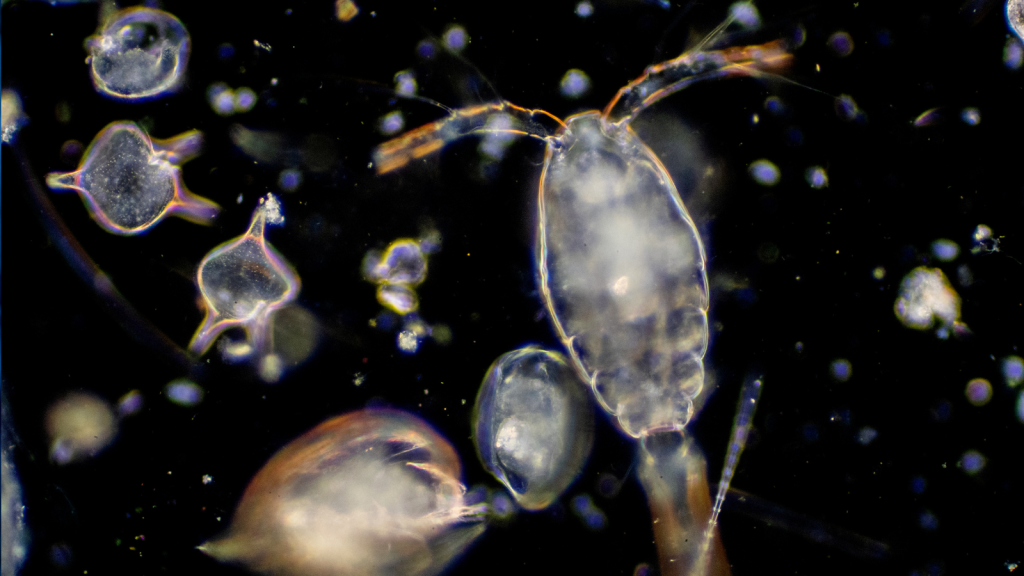Water is a miraculous substance, teeming with life invisible to the naked eye. A single drop can contain an entire universe of microscopic creatures, each with its own unique characteristics and behaviors. Brave new worlds exist in these tiny droplets, waiting to be explored. From simple bacteria to complex algae, the variety of life forms in such a small space is astounding. Let’s take a closer look at some of the fascinating organisms you might encounter if you could shrink down and swim through a drop of water.
Amoeba
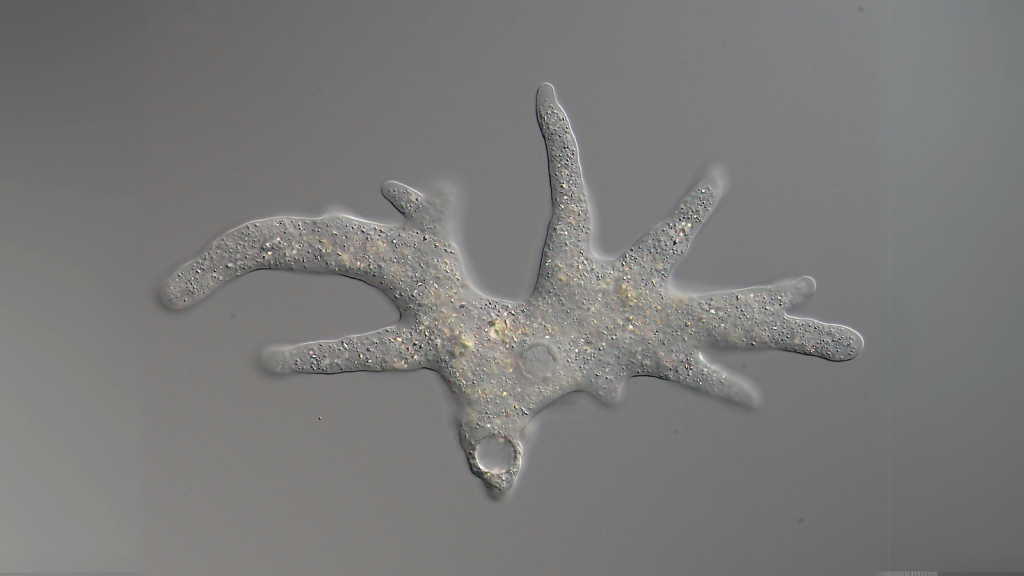
Amoebas are single-celled organisms known for their ever-changing shape. They move by extending parts of their body, called pseudopods, and use these same extensions to capture food. Amoebas can be found in almost any body of water, from puddles to oceans. Some species of amoeba can cause serious infections in humans, such as the brain-eating amoeba Naegleria fowleri, which highlights the importance of water safety.
Paramecium
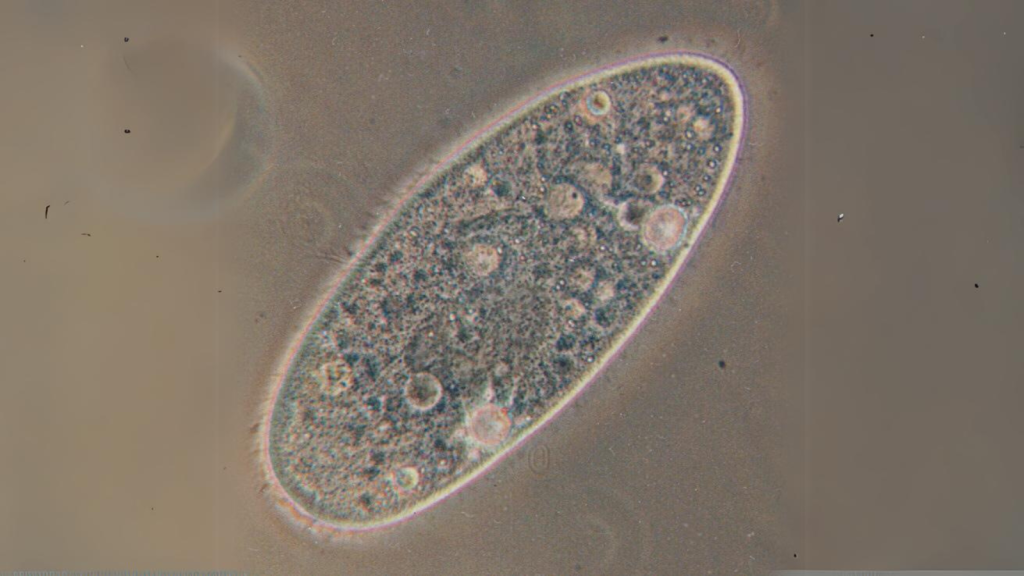
Paramecia are tiny, slipper-shaped creatures covered in hair-like structures called cilia. These cilia help them move through water and sweep food into their mouths. Paramecia are common in ponds and streams, where they feed on bacteria and other small particles. They reproduce asexually by splitting in two, but can also exchange genetic material through a process called conjugation.
Euglena
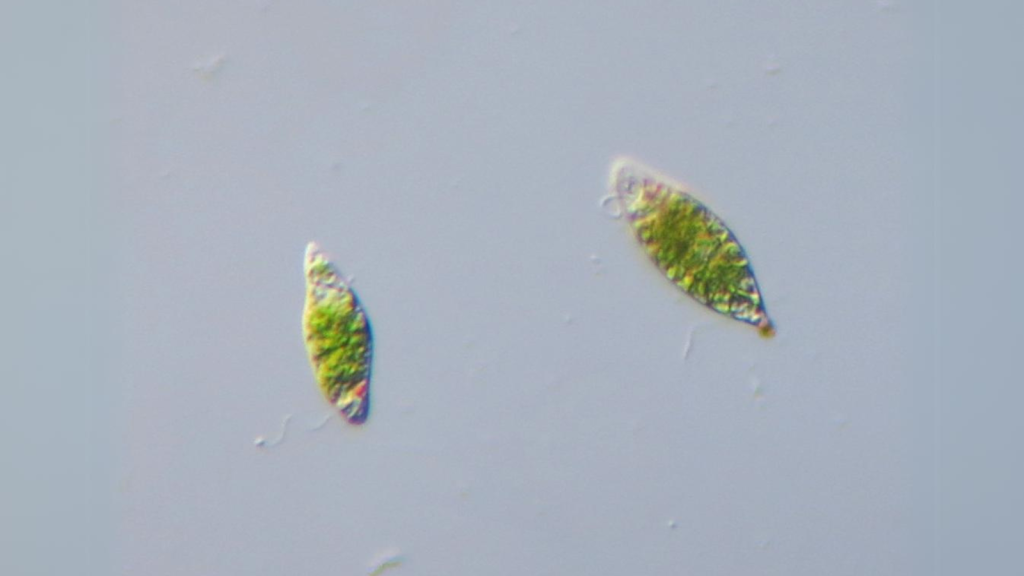
Euglena are unique organisms that can act like both plants and animals. They have chloroplasts, allowing them to make their own food through photosynthesis, but can also absorb nutrients from their environment. Euglena move using a long, whip-like tail called a flagellum. They possess a unique eye-spot that helps them detect and move towards light, optimizing their ability to photosynthesize.
Rotifer
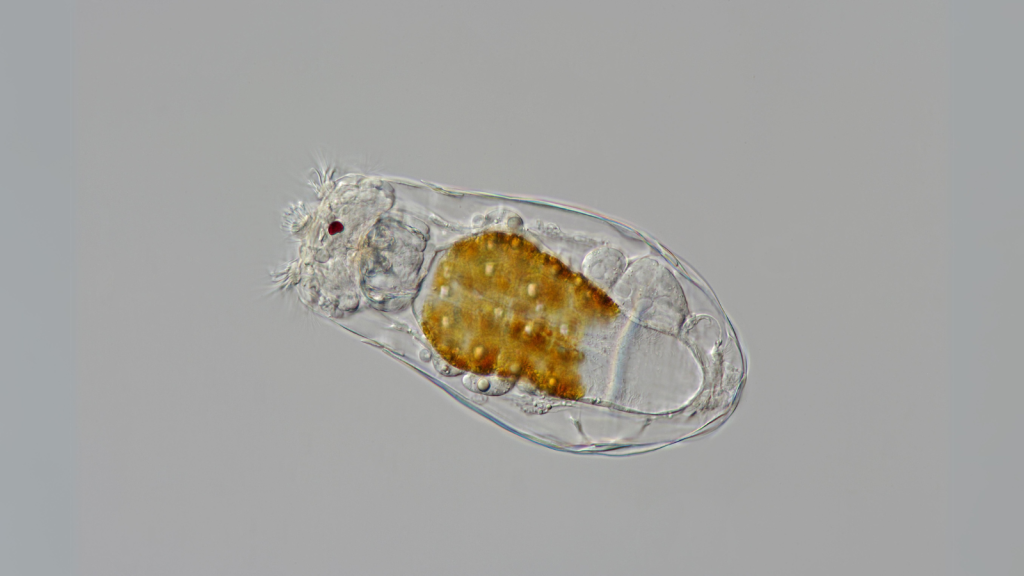
Rotifers are tiny animals with a distinctive “wheel” of cilia around their mouths. This wheel-like structure spins, creating currents that draw food towards them. Rotifers are found in many freshwater environments and play a crucial role in aquatic food chains. Some species of rotifers can survive extreme dehydration by entering a dormant state, allowing them to be transported by wind to new water sources.
Tardigrade
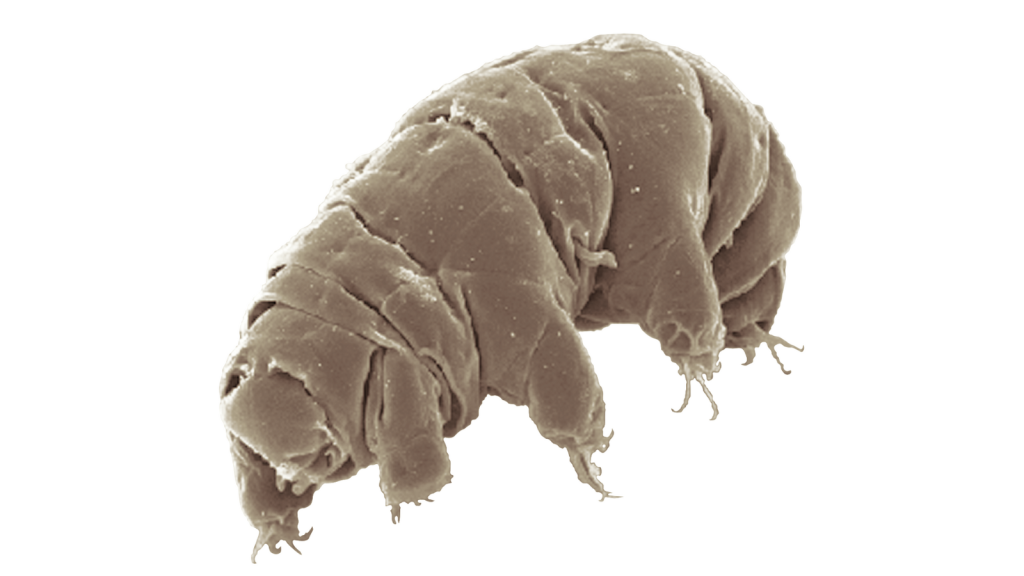
Also known as water bears, tardigrades are microscopic animals famous for their incredible resilience. They can survive extreme temperatures, radiation, and even the vacuum of space. Tardigrades are found in water droplets on mosses and lichens, as well as in ponds and oceans. Their remarkable survival abilities are due to their capacity to enter a state of cryptobiosis, where they expel almost all water from their bodies and drastically slow their metabolism.
Daphnia
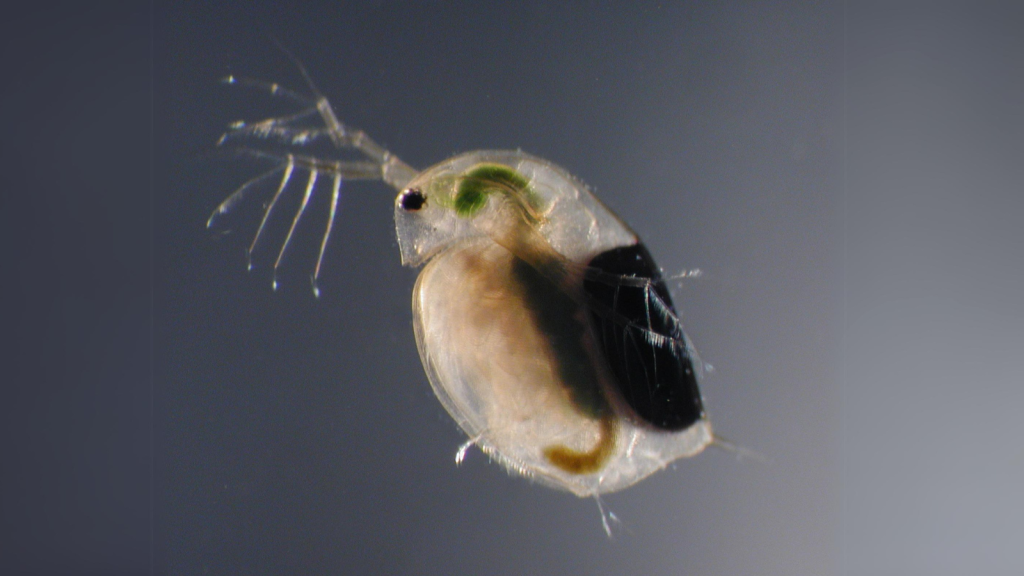
Often called water fleas, Daphnia are tiny crustaceans that live in freshwater environments. They have a transparent body, allowing you to see their internal organs. Daphnia are important indicators of water quality and serve as food for many aquatic animals. They exhibit cyclical parthenogenesis, alternating between asexual reproduction during favorable conditions and sexual reproduction when conditions deteriorate.
Volvox
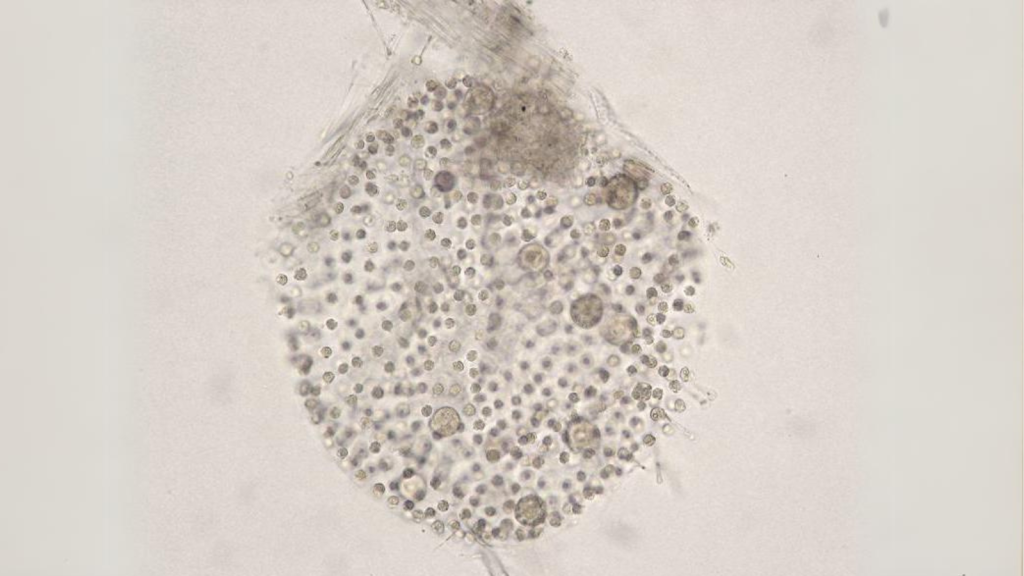
Volvox is a type of green algae that forms beautiful spherical colonies. Each colony is made up of thousands of individual cells working together. Volvox can be found in still freshwater bodies and are often studied as an example of simple multicellular organisms. The colonies demonstrate a basic form of cellular differentiation, with some cells specializing in reproduction while others focus on colony maintenance and movement.
Stentor
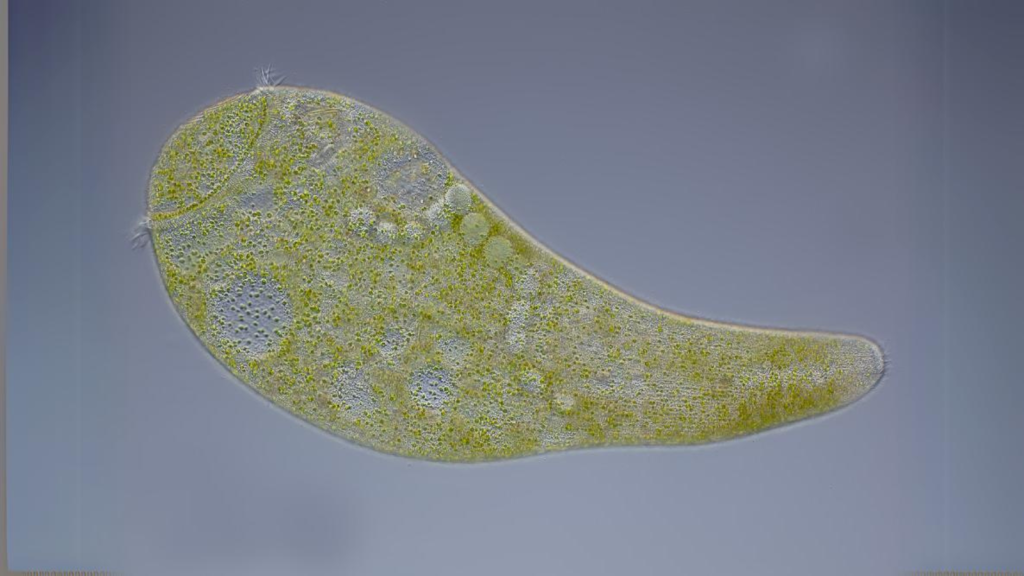
Stentors are trumpet-shaped protozoans that can stretch to over a millimeter in length, making them giants in the microscopic world. They’re covered in cilia which they use for movement and feeding. Stentors can change their shape and even regenerate if cut in half. They possess a unique ability to “remember” and learn from past experiences, showing a rudimentary form of memory despite being single-celled organisms.
Hydra
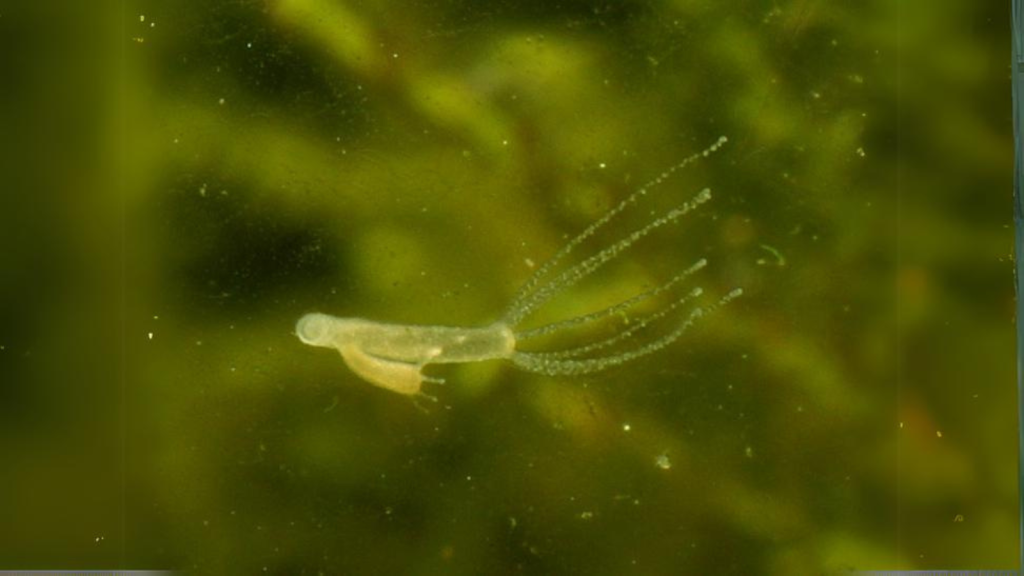
Hydras are tiny relatives of jellyfish and coral. They have a tubular body with tentacles surrounding their mouth. Hydras are known for their ability to regenerate lost body parts and potentially live forever under ideal conditions. They possess stinging cells called nematocysts in their tentacles, which they use to paralyze prey and defend against predators.
Diatom
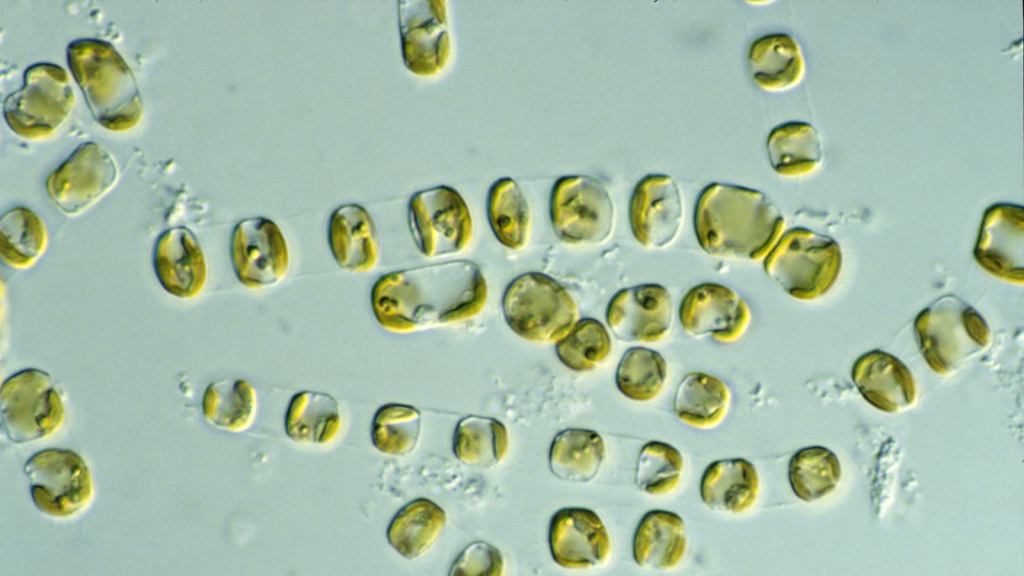
Diatoms are a type of algae with beautiful, glass-like cell walls made of silica. They come in a wide variety of shapes and patterns. Diatoms are found in both freshwater and marine environments and are crucial oxygen producers for our planet. When diatoms die, their silica shells sink to the bottom of water bodies, eventually forming diatomaceous earth, which has numerous industrial and commercial applications.
Vorticella
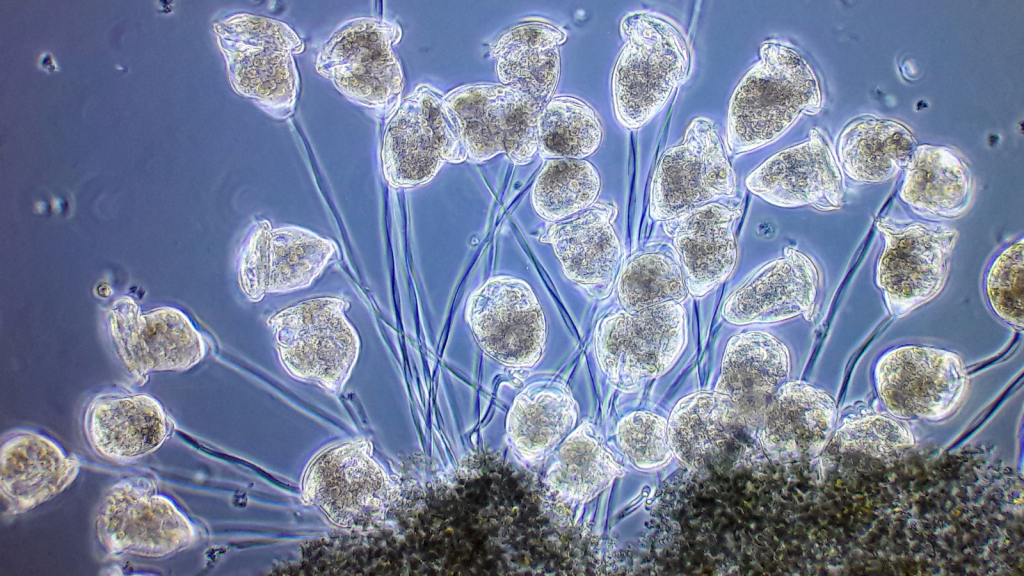
Vorticella are bell-shaped protozoans attached to surfaces by a long, spring-like stalk. When disturbed, they can quickly contract this stalk, pulling themselves away from danger. Vorticella feed by creating water currents with their cilia to draw in food particles. The stalk’s rapid contraction is one of the fastest cellular movements known in biology, occurring in just milliseconds.
Nematode
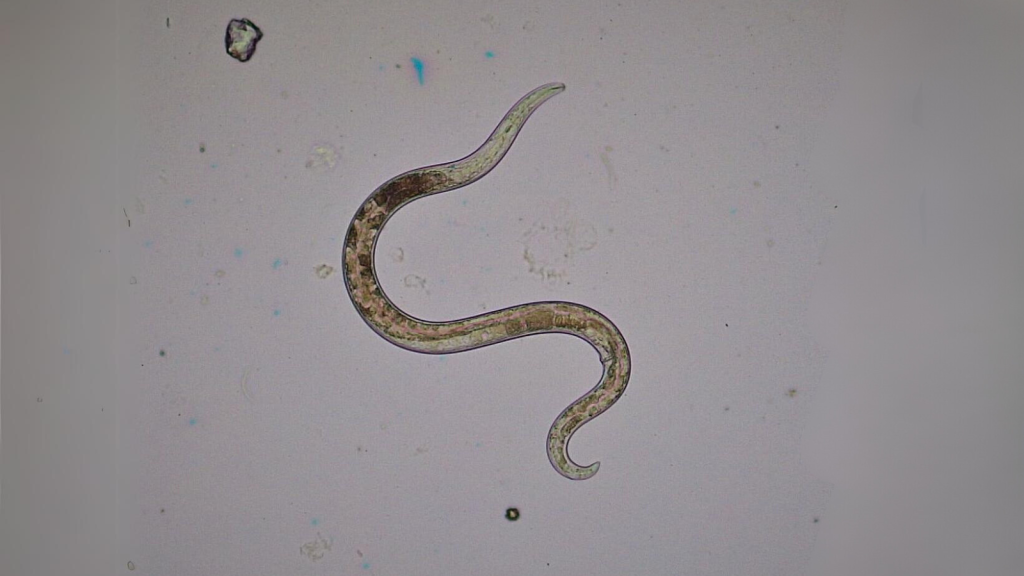
Nematodes, or roundworms, are tiny worm-like animals found in almost every aquatic environment. They have a simple body plan with a long, cylindrical shape. Some nematodes are parasites, while others are free-living and help break down organic matter. The nematode Caenorhabditis elegans is a widely used model organism in scientific research due to its simple nervous system and completely mapped genome.
Water Mite
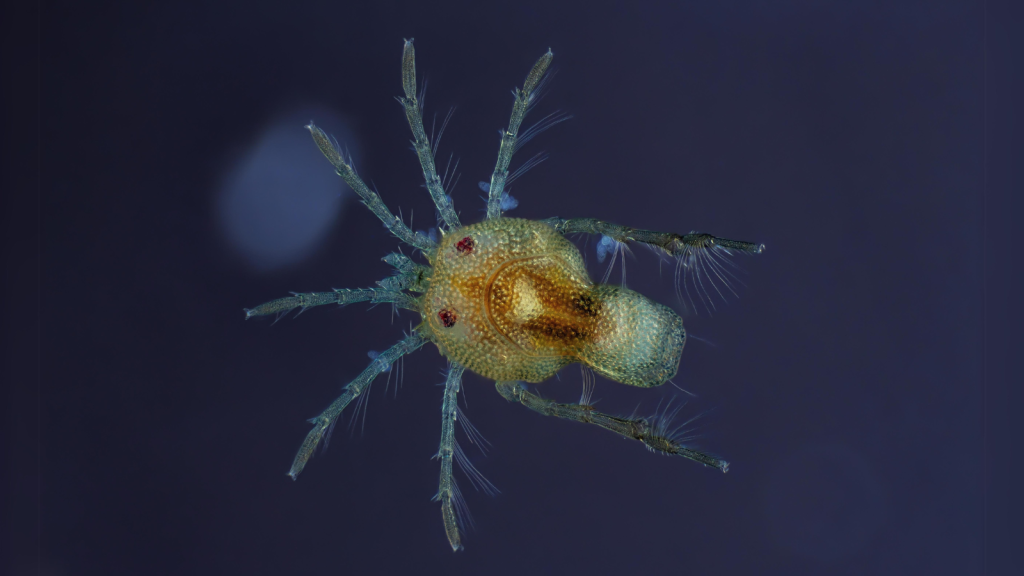
Water mites are tiny arachnids related to spiders and ticks. They have rounded bodies and eight legs, and come in a variety of bright colors. Water mites are common in freshwater habitats, where they often parasitize aquatic insects. Many species go through a parasitic larval stage, attaching to insects for dispersal before becoming free-swimming adults.
Copepod
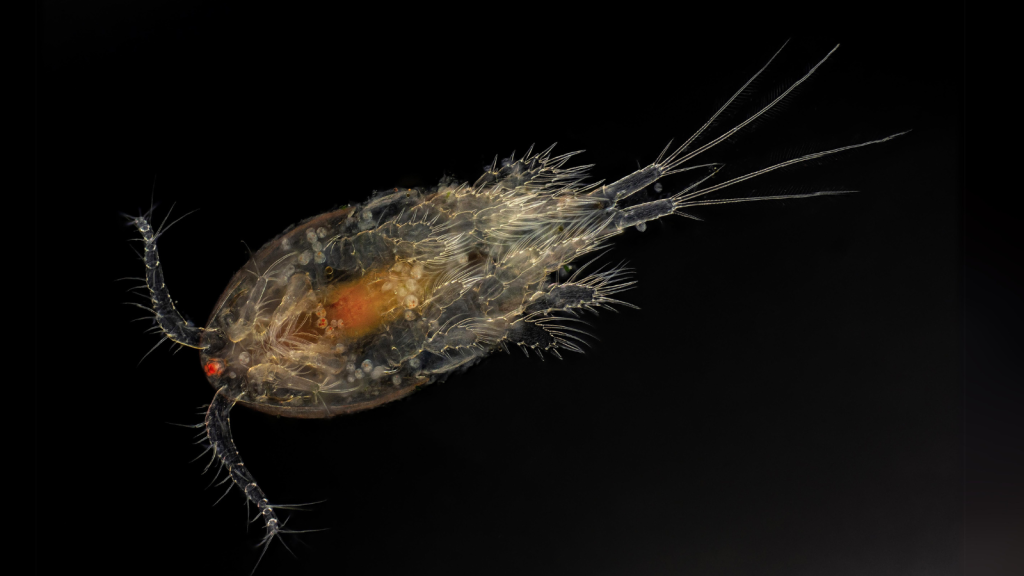
Copepods are small crustaceans found in both fresh and saltwater. They have a distinctive teardrop-shaped body and long antennae. Copepods are crucial components of aquatic food webs, serving as food for many larger organisms. Some species of copepods can jump up to 500 times their body length in a single leap, making them one of the strongest jumpers relative to body size in the animal kingdom.
Cyanobacteria
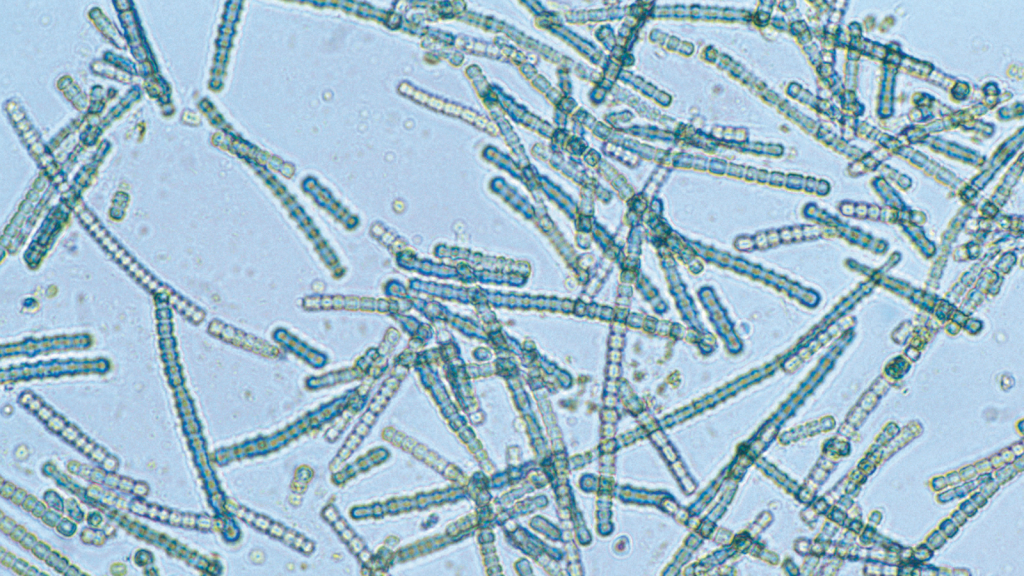
Cyanobacteria, also known as blue-green algae, are some of the oldest organisms on Earth. They can form large colonies visible to the naked eye. Cyanobacteria were responsible for creating Earth’s oxygen-rich atmosphere billions of years ago. Some species can fix nitrogen from the atmosphere, making them important in nutrient cycling in aquatic ecosystems.

